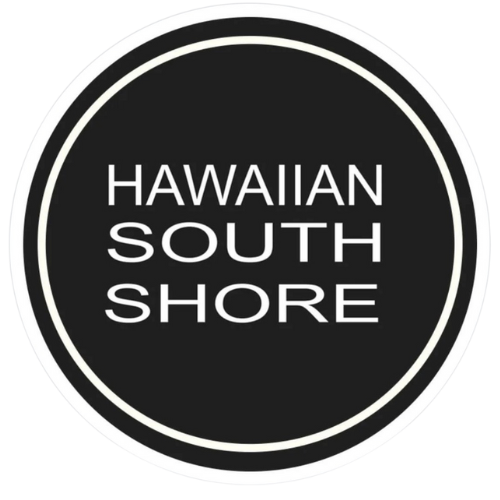Hawaiian South Shore March 2020 Newsletter
Share
NEWSLETTER MARCH 2020

Introducing the Airwave—Inflatable Artificial Reefs That May Revolutionize Surfing
With all of the hype about wave pools over the past couple of years, we have largely forgotten about artificial reefs. But for a while there, artificial reefs were all the rage. They have been installed in places like the UK,

New Zealand, Australia, and India, and in theory they are pretty great. The idea is that coastlines without natural sandbanks, points or reefs that don’t normally have good waves—and that are often at danger of erosion due to swell action—can be both protected and improved with artificial reefs. These reefs are often made from stacked sandbags, which coral may or may not grow on (depending on the temperature of the water where the artificial reefs are being installed). Local governments are stoked because these reefs break upswells that normally chew away at the beach and cliffs, thereby protecting homes, and local surfers are stoked because now they will theoretically have good waves.
The problem, of course, is the “theoretical” part. In reality, none of the artificial reefs that have been installed have actually created high-quality, long-lasting waves— so it’s no surprise that the focus has gone to wave pools in the past decade since it is much easier to control variables in a static environment. But not everyone has given up on the artificial reef concept. In fact, Troy Bottegal recently came up with a new artificial reef concept that he believes will make a big difference in his home of Western Australia.
What makes Troy’s reefs different is that, instead of stacking bags full of sand, he is using an inflatable reef model. The “Airwave” is a two-meter-tall, 12-meter-wide oval-shaped inflatable reef that progresses from a flat, deep bathymetry to a shallower reef peak. The idea is that once this inflatable reef is anchored on a sandbar without discernable shape, it will break up closed out swell lines and turn them into rippable A-frame peaks. The Airwave will be partially filled with both sand and air, making it heavy enough that it won’t be moved by swells. It is easy to install and remove, and numerous Airwaves can be installed along the same stretch of coast, making numerous waves where there are normally just close-outs.
While this concept might not be very useful in places like Hawaii, where we already have lots of real reefs creating good waves, on stretches of featureless sand bars, they could be just the ticket. But then again, they may also be another pipe dream, like all the other artificial reefs that have promised so much in the past but haven’t really delivered. There’s only one way to find out. Hopefully Troy can get permission from the Western Australian government to test a few of these things out sometime soon!
How You Can Save the Environment by Eating Uni
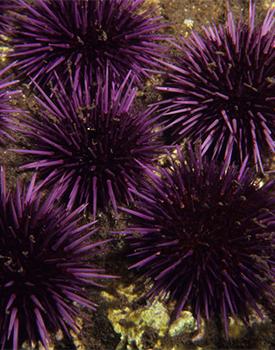 If you are a fan of sushi, then you have probably eaten sea urchin or “Uni” —and probably noticed how expensive the delicacy can be. You might think that Uni is a rarity, and in some places (and some species), that is actually true. But on the west coast of North America, the opposite is true—and that is becoming a major problem. Uni normally lives solitary lives, but lately, there has been an increase in the population of the purple urchins that populate the coast that stretches between Vancouver Island and California, and it is having a hugely detrimental effect on the ocean’s ecosystem. The urchins are thriving due to red tide algae and a virus that has decimated the starfish population, which means that there are now no natural predators to keep the urchins at bay. Urchins can eat just about anything and are opportunistic feeders, so as their population has grown, they have started munching on kelp—a sea plant that is essential to the aquatic environment. Kelp helps to sustain the bottom layer of the food chain along the West Coast, but with entire forests of kelp being obliterated by the sea urchin, the entire ecosystem is being thrown into disarray. What the ecosystem needs are a natural predator to bring the sea urchin population back down to sustainable levels. And if the ocean can’t currently provide that — well there might be someone else who can.
If you are a fan of sushi, then you have probably eaten sea urchin or “Uni” —and probably noticed how expensive the delicacy can be. You might think that Uni is a rarity, and in some places (and some species), that is actually true. But on the west coast of North America, the opposite is true—and that is becoming a major problem. Uni normally lives solitary lives, but lately, there has been an increase in the population of the purple urchins that populate the coast that stretches between Vancouver Island and California, and it is having a hugely detrimental effect on the ocean’s ecosystem. The urchins are thriving due to red tide algae and a virus that has decimated the starfish population, which means that there are now no natural predators to keep the urchins at bay. Urchins can eat just about anything and are opportunistic feeders, so as their population has grown, they have started munching on kelp—a sea plant that is essential to the aquatic environment. Kelp helps to sustain the bottom layer of the food chain along the West Coast, but with entire forests of kelp being obliterated by the sea urchin, the entire ecosystem is being thrown into disarray. What the ecosystem needs are a natural predator to bring the sea urchin population back down to sustainable levels. And if the ocean can’t currently provide that — well there might be someone else who can.
We, humans, love to eat delicious treats, and the uni that can be harvested from Uni is one of the tastiest. While humanity’s tendency to over-consume often has negative effects, for once, the opposite might prove to be true. By increasing the demand for uni, we will motivate fishermen to harvest more Uni, thereby decreasing the population and providing a respite for kelp forests that desperately need to regenerate. Yep, you read that right—we can save the environment by eating more uni! And the best day to do that, of course, is sushi.
So next time you feel like doing something good for Mother Earth, head down to your local sushi bar. Order something delicious (while making sure that any fish you consume was responsibly caught, of course), and make sure that it comes with a healthy serving of uni from purple Uni.
Let’s save the planet with our chopsticks!
February Member of the Month Q & A with Tiny
When and why did you initially get into surfing?
I started surfing around 10 years old. The feeling I got from standing up on my board was like walking on water. My first board was a 5”10 Wes Oshiro surfboard.
Did you have a time period you laid off from surfing? If so, when and why did you start back up?
I’ve never stopped surfing.
What is your favorite thing about surfing?
The thing about surfing is that when you’re in the water all worries and stress are left at the car and once my feet touch the sand, I feel I’m in my own world.
Where is your favorite place to eat after surfing? What is your favorite item on the menu?
My favorite place to eat is at grandma’s house. She always had food to eat whether it's fried Aku with poi or just eggs spam and rice.
What other hobbies do you have besides surfing?
If they were no waves, I would go shore fishing or playing the ukulele at our family get-togethers.
What type of work do you do?
I currently work at the Daniel K Inouye International Airport and oversee Maintenance on the Baggage Handling System, Inbound/Outbound Carousels and Jet Bridges.
Tell us about the boards you purchased from us.
The Firewire boards bought are super maneuverable, durable and lightweight. The board under my feet brings back my youth days of surfing now being at 46 years old.
What model and size is it, and how do you like its performance?
I bought a Firewire No Brainer 6”4 and Firewire Seaside 6”1. Before summer begins, I will order a 5”11 Firewire Baked Potatoes. The Firewire surfboard performance is like no other very responsive from rail to rail and is very maneuverable. I’m very pleased with the new technology and materials used by Firewire.
Do you have any additional comments?
Here are the different Firewire surfboards I owned in the past 6 years:
• 7”6 Firewire Advance FST bought used
• 6”8 Firewire Advance FST bought used
• 6”4 Firewire Sweet Potato LFT bought new
• 6”2 Firewire Vader LFT bought new
• 6”0 Firewire Sweet Potato FST bought used
• 6”6 Firewire Greedy Beaver bought new
• 6”6 Firewire Sci-Fi LFT bought new
• 5”10 Firewire Sweet Potato FST bought used
• 6”5 Firewire Chum Lee Helium bought new
• 6”4 Firewire Evo LFT brought new
• 6”4 Firewire Evo Helium bought new
Taylor Jensen’s The Gem
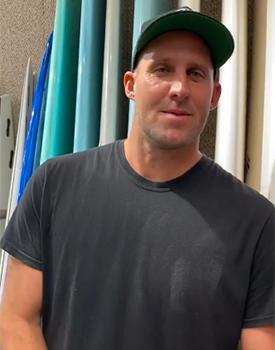
Regulars at Hawaiian South Shore know how excited we are about the variety of boards available from Thunderbolt Technology, and the latest board Taylor Jensen board known as The Gem has us downright frothing!
Available in April, The Gem is an all-around, high-performance longboard designed by Taylor and shaped by Dan Mann that can noseride as well as it can shred. Available in both carbon and fiberglass as a 9’1”, and in fiberglass as a 9’5”, The Gem is a great one-board quiver, bringing together the best of both traditional and high-pro boards.
It is a super fun small-wave board, intended to bridge the gap between Taylor’s TJ Pro and Special T (his contest board and dedicated single fin, respectively). The Gem can be ridden as both a single fin or a 2+1, depending on what type of surfing you are looking to do. It features a full teardrop concave in the nose to support noseriding, and a vee through the middle, giving way to a double concave through the tail that lends itself to a more vertical, high-performance approach.
The 9’1” is suggested for larger waves, while the 9’5” is great for larger guys who want the performance of The Gem, but with a bit more volume. If you are looking for an all-around longboard that can do a bit of everything—and that has been proven under the feet of a world champion—The Gem does the trick. 9’1” x 22 1/4” x 3” 67.1 liters 9’5” x 22 1/2” x 3” 72.1 liters
Seth Moniz Visit to the Shop

One of the most exciting parts about running a surf shop is getting to meet all sorts of surfers every day—from weekend warriors to pros on the world tour. One of those frequent visitors to our shop is Seth Moniz, a local boy from the South Shore who was a rookie on tour this past season.
Seth ended up having a great season, finishing in the top 12 and winning WSL Rookie of the Year. He also dropped an edit called “Fruition” that demonstrates exactly why he is one of the best surfers in the world. Seth comes into the shop every now and then to pick up fins. He is sponsored by FCS, and since he’s from Town, the easiest and most convenient way for him to stock up on fins is from our huge selection here at Hawaiian South Shore, plus we’re the FCS premier dealer!
He picked up a set of Power Twin for a twin fin that his shaper highly recommends. I can't agree more these fins for any stubby board on small days. I use mine on the Black Baron and lately, I’ve been using them on my Firewire No Brainer as a Quad set. Side-Power twins and a set of small flat foil rear quads. I used the flat foil rear quads on small days. It’ gives the tail lots of lift and really loses it up. If you’ve seen our FCS Instagram TV with Keoni Watson the local FCS fin expert you’ll know why I use the flat foils on the quad. If you haven’t go to @hwnsouthshore IGTV and from the dropdown check out FCS.
Keep an eye out for Seth the next time you see spray getting chucked along the Ala Moana stretch of reef, and tune in this coming month when the world tour kicks off at Snapper Rocks, Australia!
The Sci-Fi 2.0 A New Daniel “Tomo” Thomson Shape With Input From Shane and Jackson Dorian
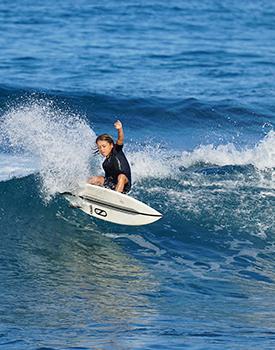
If you keep up with the latest developments in surfboard design, then you have no doubt seen the Sci-Fi in action. Shaped by Daniel “Tomo” Thomson and released by Firewire/ Slater Designs, the Sci-Fi is funky, battled shortboard with Tomo’s signature “quad inside double concave” bottom contour that has been shredded by some of the world’s best surfers.
The Sci-Fi first popped onto our radar when Stu Kennedy surfed it in the world tour event at Snapper Rocks a few years back. Stu was going so fast and ripping so hard on Tomo’s design that it made everyone else in the event look like they were surfing in slow motion, and it wasn’t long before the Sci-Fi became a bestseller.
Now we are excited to learn that Sci-Fi 2.0 is due to be released any day. Shane Dorian and his mini-grom Jackson have been working with Firewire to help refine the design, and they are raving about the board. In preparation for the release of the Sci-Fi 2.0, I got in touch with the guys at Firewire to learn as much as I could about the updated design. The first thing they told me was that the board will have a lot of similarities with the original Sci-Fi. For instance, it will have the same rails and generally the same outline, with the only major difference being that the wide point has been moved a little farther forward to make the board looser and more responsive from rail to rail, and also provide a bit of extra volume for paddle speed and drive.
Meanwhile, the bottom contours have been reinvented, and are actually the inverse of the original Sci-Fi. While the first iteration of the board had the “quad inside double concave” where the outside channels extended farther up the middle of the board, the Sci-Fi two still utilizes the “quad inside double concave,” but the middle two channels extend father up the board, rather than the outside ones. The tail also has a touch more rocker, providing more pocket control and a tighter turn radius in the pocket. It’s also pulled in so not quite as wide as the original Sci-Fi The Sci-Fi 2.0 will be available in LFT construction and is sure to be one of the most popular and rippable boards of 2020.
Traditional Tofu in Okinawa and Kalihi
Growing up in Okinawa, tofu was a major part of my diet—and it also exposed me to some interesting experiences! I remember visiting some relatives on a small island called Henza that is connected to Okinawa by a land bridge. I stayed there for a few months, and remember that you had to park your car in a neighborhood parking lot, and then walk into the village because the roads were really small the houses were really close. It sort of felt like a National Geographic scene, and it was an interesting place to stay with my relatives!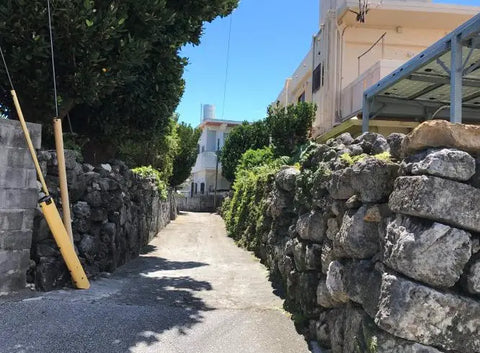
Every morning, the local grandmother would have me run down to the Mom and PoP market to pick up a few cubes of tofu at the tofu place. They would have a bunch of tofu floating in cold water, and I would take a bucket and fill it up with two tofus, and run home so we could have tofu for breakfast. Thinking back that it really stuck out in my memory growing up in Okinawa.

The other day I was chatting to someone about that memory, and it made me think about a small tofu place here on Oahu. The store is called Mrs. Cheng’s, it’s located at the end of Kalihi Street. If you leave our store and head towards Ewa, right after you pass Home Depot you will come to Kalihi Street.
After turning left, you will see it on the left side across the street from Ethel’s Grill. Mrs. Cheng’s makes all sorts of tofu. I hadn’t been there in five or six years, so I decided to pay the store a visit, and ended up buying some soft tofu. They call it tofu pudding, and it comes in sort of an ice cream quart jar. I tried the soymilk too, but I’ve never really been into soymilk. I prefer tofu more. When you get the tofu, you also get some honey ginger to go with it, but we typically just eat it with shoyu and grated ginger on top. You also get okara, which is a byproduct of the tofu production process. For $1 you get a bag full of okara, which we use for all sorts of things, like making okara hamburgers and okara cookies. The tofu will typically last around five days, and it’s best if you change out the water each day, and keep it refrigerated. The Okara my wive used it within a week. Not sure how long that will keep.
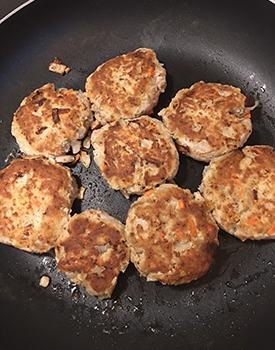
What I find interesting is that most of us are used to getting our tofu in packages from big grocery stores, but we don’t really have any idea how it is made or where it comes from. But reminiscing about my time in Okinawa helped me to once again appreciate the art of making tofu, and the ritual of heading down to the tofu store to get some homemade tofu for the kitchen. If you’ve never had this experience, I encourage you to head to Mrs. Cheng’s and see what they have to offer!
Dave’s Morning Routine and Knee Rehab
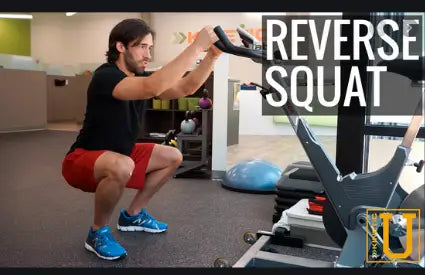
Here is a video that I found that might help understand a bit https://www.youtube.com/watch?v=0fAApyjBnMs
Over the past few months I have been working through my knee injury, and last month my orthopedic surgeon and I decided that we would try to manage the injury conservatively rather than with surgery. To help stabilize my knee, I have started to do rehab and physical therapy, strengthening the muscles around the knee and also working on flexibility and range of motion.
The one exercise that I have found really helps my knee feel stronger is called the reverse squat. In this exercise, I hold onto something in front of me to stabilize me (like a table or chair), then I squat down as if I were sitting down on a chair. Once I am down low so that my hips are down at the same level as my knees, I hold the pose, then stand up again (still holding onto the table). I do this a number of times, and it seems to be strengthening my quads and other upper leg muscles, which is really helping my knee to feel better!
I have also been integrating a bunch of calisthenics into my morning routine, as well as a yoga stretching practice. My yoga routine includes a number of variations on chataranga, the runner’s lunge, and down dog, as well as a standing forward bend that really helps open up my core. I find this stretching routine to be so beneficial for my body, and it really helps set my day up!
Recently I have wanted to add some variety to my yoga practice, so I asked Hawaiian South Shore’s resident yoga teacher Kilty Inafuku to put together a new routine for me.
We will be sharing that routine with you all soon so that you can start your day limber and centered as well!

READ MORE
Hawaiian South Shore February 2020 Newsletter
Hawaiian South Shore January 2020 Newsletter
